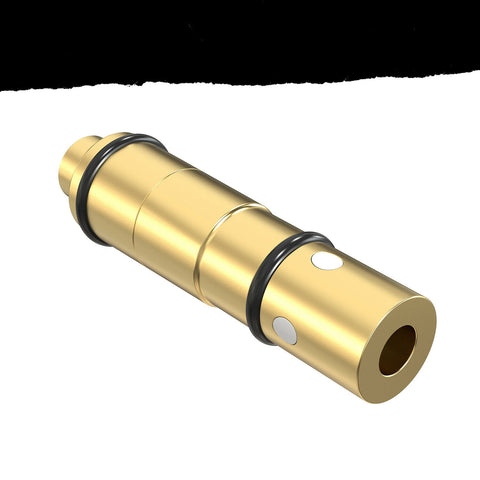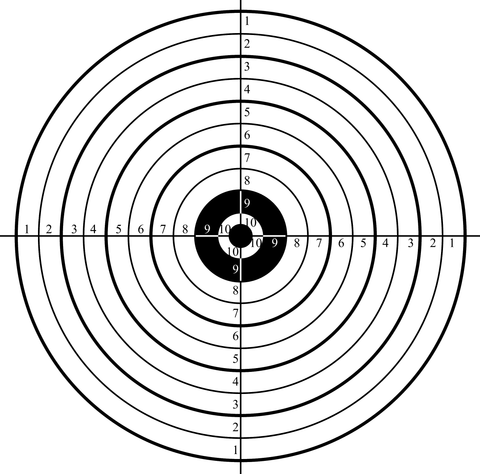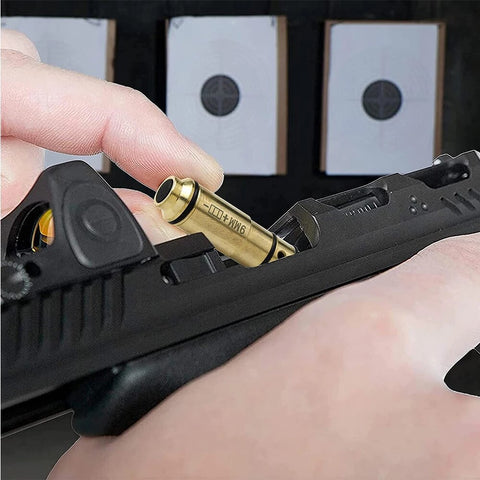It appears that your cart is currently empty
Mastering Dry Fire Training at Home: A Beginner’s Guide
Are you new to shooting and looking to improve your skills safely and effectively at home? Dry fire training might just be the solution you've been searching for.
In this guide, we'll explore dry fire training, its multiple benefits, the essential tools required, and how a dry fire system can be used.

Understanding Dry Fire Training Systems
Dry fire training involves practicing with your firearm without using live ammunition.
This training lets you simulate shooting scenarios safely at home. It focuses on improving your gun handling, sight alignment, and trigger control.
A dry fire training system can include many tools, including unloaded firearms, snap caps, laser sights, and training targets. They provide a realistic shooting experience without the risks of live ammunition.
Benefits of Dry Fire Training for Home Practice
Incorporating dry fire training into your home practice routine offers numerous advantages:
-
Improves firearm handling. Builds familiarity with your weapon.
-
Improves muscle memory. Helps in mastering the mechanics of shooting.
-
Refines trigger control. Aids in achieving smooth, consistent trigger pulls.
- Promotes better shot placement. Focuses on accuracy and precision.
These benefits of dry fire training make it an invaluable practice method for novices and seasoned shooters.

Essential Tools and Equipment for Dry Fire Practice
To get started with dry fire practice techniques at home, you'll need the following:
-
Unloaded firearms. Ensure all firearms are clear of ammunition.
-
Snap caps. These are dummy rounds that protect your firearm from damage.
-
Training targets and safe backstop. To safely capture any accidental discharge.
-
Protective gear. Always wear protective eyewear.
- Dry fire sights: Products like lasers and sights improve aiming and shot accuracy.
How to Use Your Dry Fire System
Setting up your dry fire system is straightforward:
-
Set up a safe environment. Ensure a clear area with a secure backstop and instill home shooting drills.
-
Install snap caps. Load your firearm with snap caps. (Snap caps are dummy rounds or fake ammunition designed for use in firearms for various training and testing purposes.)
-
Position your training targets. Place them at varying distances to practice different scenarios.
-
Practice proper grip and stance. Focus on maintaining a balanced and stable shooting posture.
- Execute dry fire drills. Practice trigger pulls and aim with your dry fire sights.

Tips and Techniques for Effective Dry Fire Training at Home
To maximize your dry fire practice, consider setting up a dry fire training system:
-
Maintain safety protocols. Always treat the firearm as if it is loaded.
-
Dedicated training area. Set up a specific area solely for your training sessions.
- Focus on specific skill areas. Utilize drills that improve sight alignment, trigger control, and reloading.
H2: Common Mistakes to Avoid in Dry Fire Practice
Watch out for these common pitfalls:
-
Improper firearm handling. Always follow proper safety and handling protocols.
-
Neglecting safety measures. Never bypass safety steps, even during dry practice.
- Developing bad habits. Stay mindful to practice correct techniques consistently.

Dry fire training offers a safe, effective, and economical way to improve your firearm training at home.
With the right tools, like the dry fire training system and techniques provided by our team at Aim Right Outdoor Co., You can practice and perfect your firearm handling abilities without the risks associated with live ammunition.
Don't miss out on the opportunity to train like the experts.
Head over to Aim Right Outdoor Co. and check out our selection of dry fire training tools. Train safely and effectively, and transform your shooting abilities!

0 comments